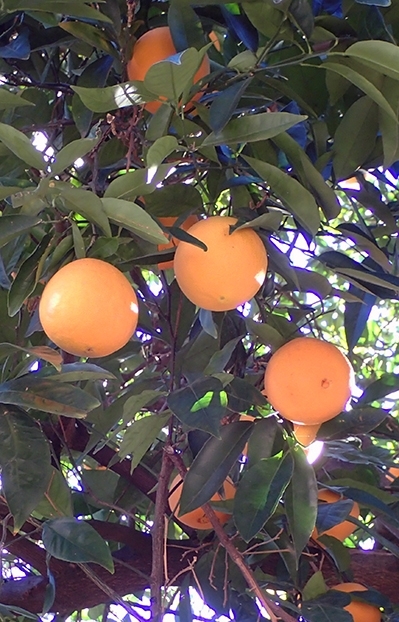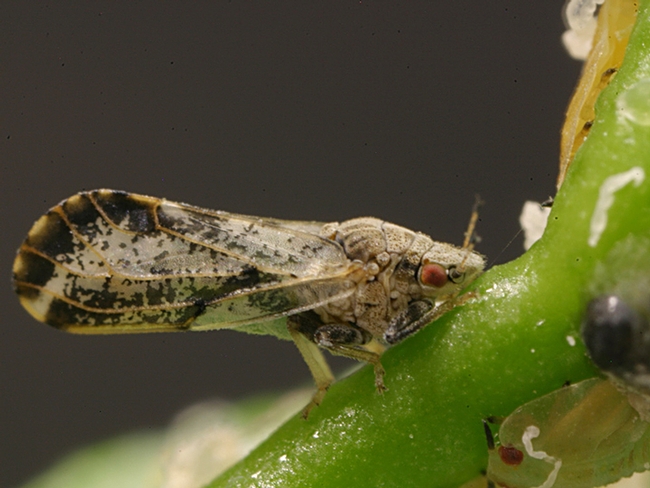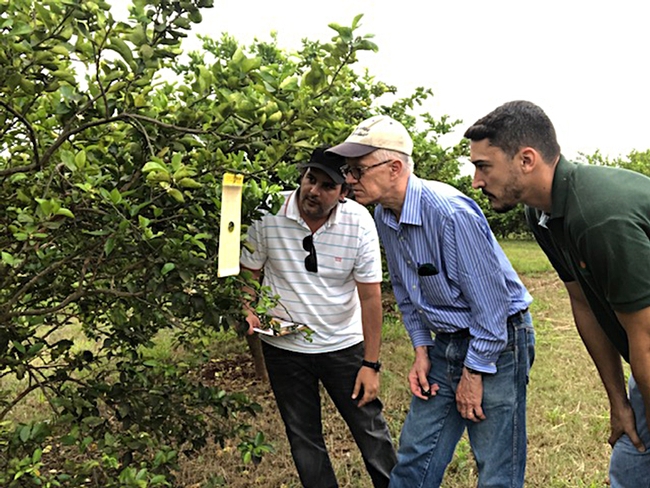
The insect, a native of Asia, was first detected in the United States (Palm Beach County, Florida) in 1998, and California (San Diego County) in 2008. HLB, the bacterial disease that it transmits, was first detected in Florida in 2005, and in California (Hacienda Heights, Los Angeles County), 2012.
“The ACP has the potential to establish itself throughout California wherever citrus is grown,” according to the California Department of Food and Agriculture (CDFA).
Now an international team of scientists, led by chemical ecologist Walter Leal of the University of California, Davis, has discovered a new lure or male attractant that's more efficient and effective than the current trap surveillance system of yellow sticky traps.
“Our newly discovered lure captures an average of three times more ACP than the current trapping system, the sticky yellow traps,” said Leal, a distinguished professor in the Department of Molecular and Cell Biology and a former chair of the Department of Entomology and Nematology. “And it works in areas with low population densities. This is particularly important in California, because HLB is already established in urban areas and, therefore, trap surveillance systems are at a premium.”
The research, “Laboratory and Field Evaluation of Acetic Acid-Based Lures for Male Asian Citrus Psyllid, Diaphorina citri, is published today (Sept. 9) in Scientific Reports. It can be accessed free online at https://www.nature.com/articles/s41598-019-49469-3.
The 16-member team, which includes scientists from Brazil and Costa Rica and Benjamin Lehan of California State Polytechnic University, Pomona, wrote in their abstract: “Lures are much needed for improving ACP trapping systems for monitoring populations and surveillance. Previously, we have identified acetic acid as a putative sex pheromone and measured formic acid- and propionic acid-elicited robust electroantennographic responses. We have now thoroughly examined in indoor behavioral assays (4-way olfactometer) and field tests the feasibility of these three semiochemicals as potential lures for trapping ACP. Formic acid, acetic acid, and propionic acid at appropriate doses are male-specific attractants and suitable lures for ACP traps, but they do not act synergistically.”
“An acetic acid-based homemade lure, prepared by impregnating the attractant in a polymer, was active for a day,” they wrote. “A newly developed slow-release formulation had equal performance but lasted longer, thus leading to an important improvement in ACP trap capture at low population densities.”

“The disease has ravaged the citrus industry in China and Brazil,” said Leal, a native of Brazil. “In Brazil, about one-fourth of the citrus trees in the state of São Paulo has been eradicated since 2004 as part of an HLB control strategy. Florida has also sustained severe losses.
Now the disease threatens California's citrus growers “Of note, 1,100 findings of HLB in urban, but not in commercial orchards, suggest that the disease is already established in urban areas in California,” the scientists wrote. “Monitoring ACP populations is essential for integrated vector management and, more importantly, for surveillance. One of the challenges for abatement personnel in areas of low ACP densities is to capture the vector to determine infection status so that control strategies can be implemented before HLB is spread. Therefore, the development of trapping systems is at a premium, particularly the discovery of lures for enhancing ACP captures in areas of low populations.”
Earlier, an international team of scientists led by Leal identified the sex pheromone of the Asian citrus psyllid. Leal, a fellow of the Entomological Society of America and the Entomological Society of Brazil, announced the discovery, encompassing six years of research, at the 10th Annual Brazilian Meeting of Chemical Ecology in Sao Paulo in December 2017. (See Bug Squad blog)
Pheromones and other semiochemicals are widely used in agriculture and medical entomology. “Growers use them as lures in trapping systems for monitoring and surveillance, as well as for strategies for controlling populations, such as mating disruption and attraction-and-kill systems,” Leal noted.
In response to the ACP invasion in California, the CDFA has launched an extensive monitoring program to track the distribution of the insect and disease. They check yellow sticky traps in both residential areas and commercial citrus groves, and also test psyllids and leaf samples for the presence of the pathogen.
Survey methods for ACP include visual inspections; sweep netting, and placement of yellow sticky traps in trees in citrus nurseries, commercial citrus-producing areas and residential properties throughout the state, according to the CDFA. They also place sticky traps in California fruit packing houses, specialty markets, retail stores and airports that receive such produce from areas known to be infested with ACP.
CDFA has set up a hotline at (1-800-491-1899) for residents to report suspicious insects or disease symptoms in their citrus trees.
Resources:
Attached Images:
